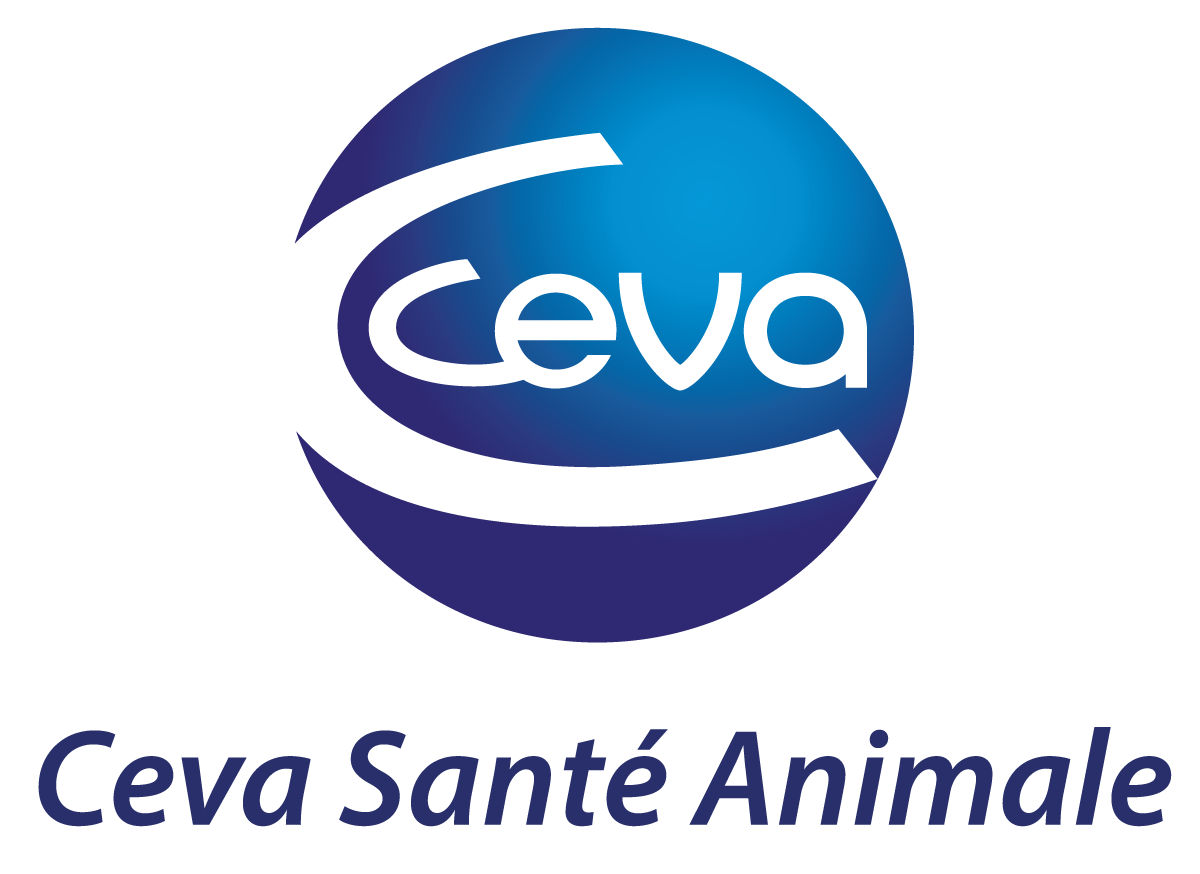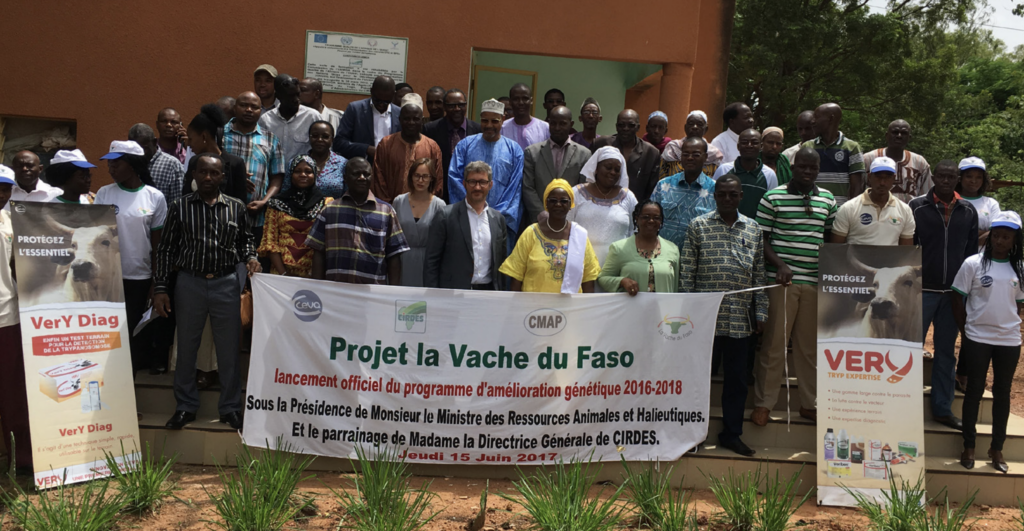
Beginning in 2016 and lasting 3 years, the Vache du Faso (VdF) project – funded by the Bill & Melinda Gates Foundation and managed by Ceva – aimed to improve milk production in Burkina Faso. It planned to achieve this by crossbreeding hardy but low yielding local zebu cows with one of two French dairy breeds to produce productive crossbred dairy cows that were well adapted to the harsh local context.
The initial objective was to produce 2,400 first-generation crossbred (F1) calves (1,200 females and 1,200 males) from 5,000 local zebu cows through artificial insemination (AI) using imported frozen semen obtained from carefully chosen exotic bulls in France. It is envisaged that when mature these crossbred cows will produce six-times as much milk as unimproved local cows.
Currently, Burkina Faso is highly dependent on imported milk powder to meet local demand. Two traditional French dual-purpose breeds, the Tarentaise and the Montbéliarde were chosen to provide the semen for AI. This was based on their hardiness and ability to cope with the high temperatures, thrive on poor-quality feed and trek to access distant pastures, all of which are features of the Burkina Faso context.
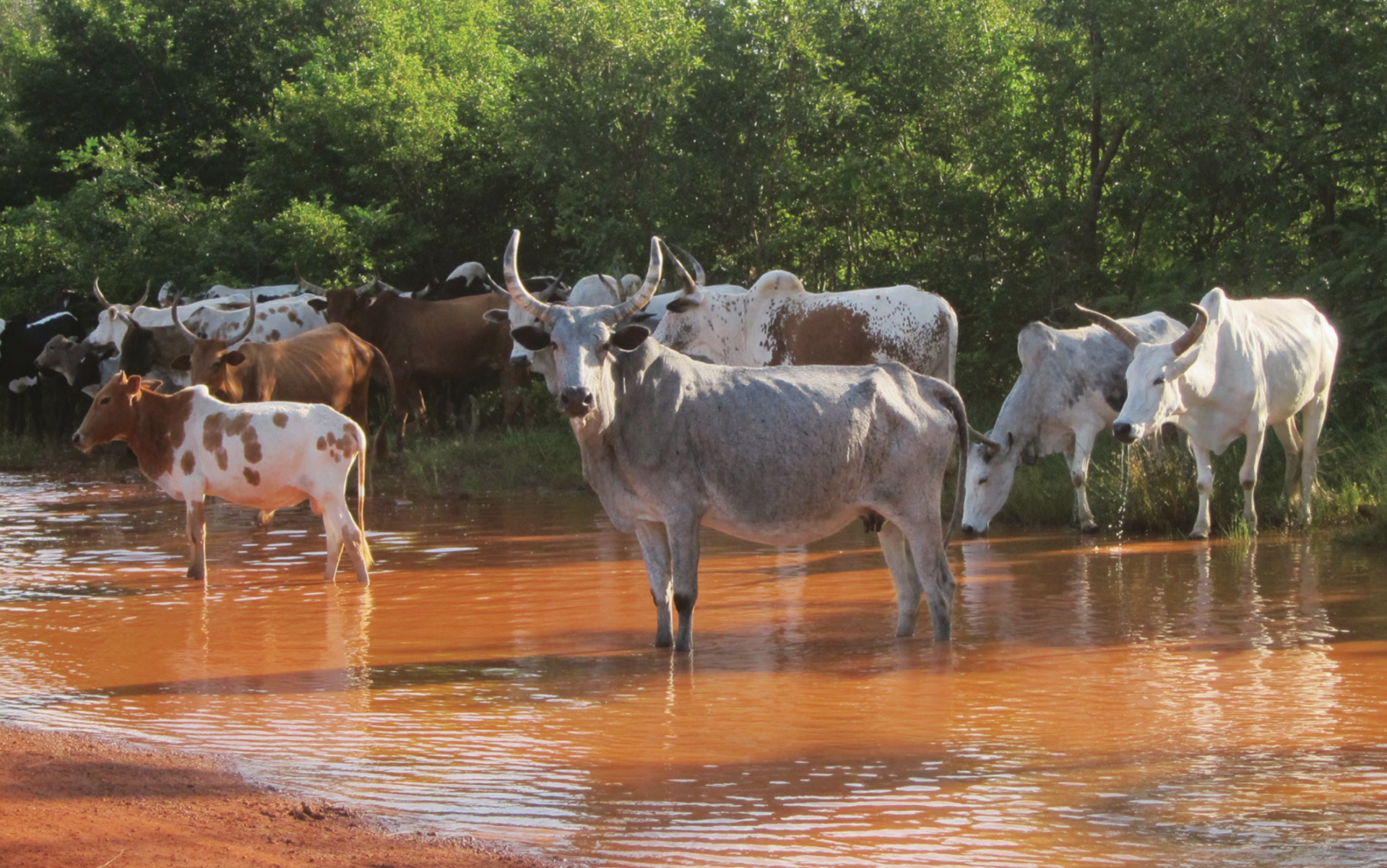
In Burkina Faso and similar tropical countries, local zebu cows rarely cycle (so they do not ovulate) and heat detection is difficult. In these conditions, fixed-time AI is considered to be appropriate for breeding programs. This requires that a full hormonal procedure is used to allow synchronized ovarian cycles to be created in a group of animals so they can all be inseminated at the same time without the need to detect whether the cows are on heat. The genetic strategy for the project was to stabilize the F2 and subsequent generations at 50% local zebu and 50% exotic dairy breeds to ensure the hardy characteristics of the local cattle was retained. To avoid inbreeding and uncontrolled breeding, especially dilution of the genetics of local zebu, crossbred males not required for breeding were to be castrated.
For the Vache du Faso project, both transhumant and more settled peri-urban farmers were required to present their best cows that met the project’s criteria for AI, including being less than 10 years of age, with no heifers and no history of calving difficulties. After confirming they were not pregnant, most cows received a short, 8-day hormonal protocol prior to fixed-time AI, all t no cost to the farmer. Pregnancy diagnosis was performed at 42 days post-AI using mobile ultrasound equipment and of those cows found not to be pregnant, 50% of the best cows were subject to a second AI procedure. On average each cow underwent 1.26 inseminations. Cows also received a comprehensive package of preventive animal health treatments.
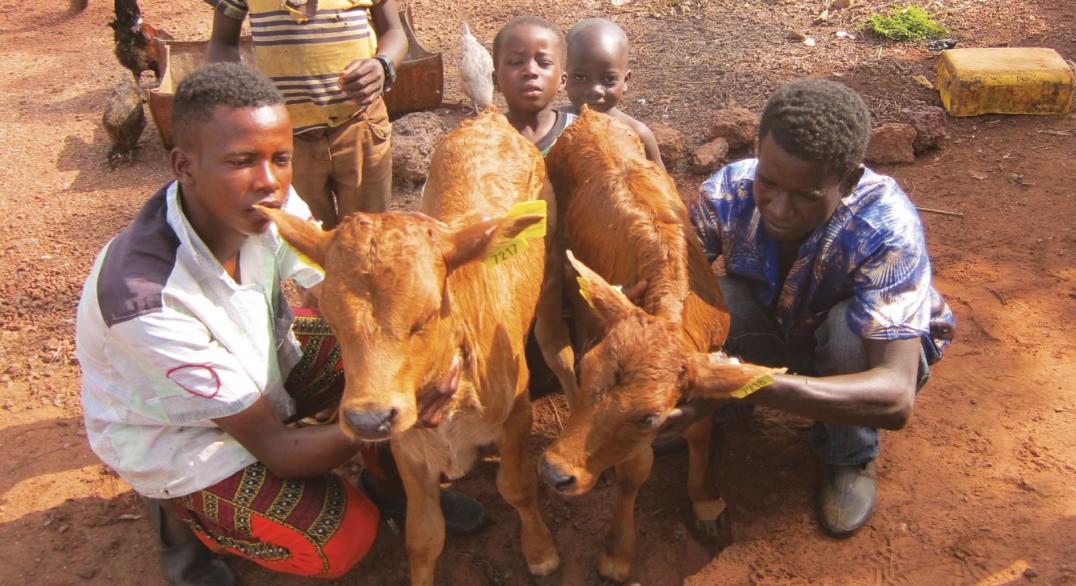
There was a shortage of experienced AI technicians in the country so AI technicians involved in the project received ongoing training and support from experts from France who had experience of managing cattle reproduction in sub-Saharan Africa. Based on data recorded by the project team and also corrections made to the data to accommodate sources of error, especially underreporting of calves by the farmers, it is estimated that the project resulted in 5479 cows being inseminated (exceeding the
target of 5000) leading to 2242 pregnancies, 1581 calvings with a 5% twinning rate and 1658 crossbred calves surviving to one month of age. This is equivalent to a 34% conception rate (close to the project’s target of 35%) and a 29% loss rate following a positive pregnancy diagnosis. The latter was higher than expected which contributed to the project falling short of its target of 2,400 crossbred calves. An outbreak of foot-and mouth disease in 2018, which was associated with a significant decline in conception rates, was another factor contributing to the shortfall.
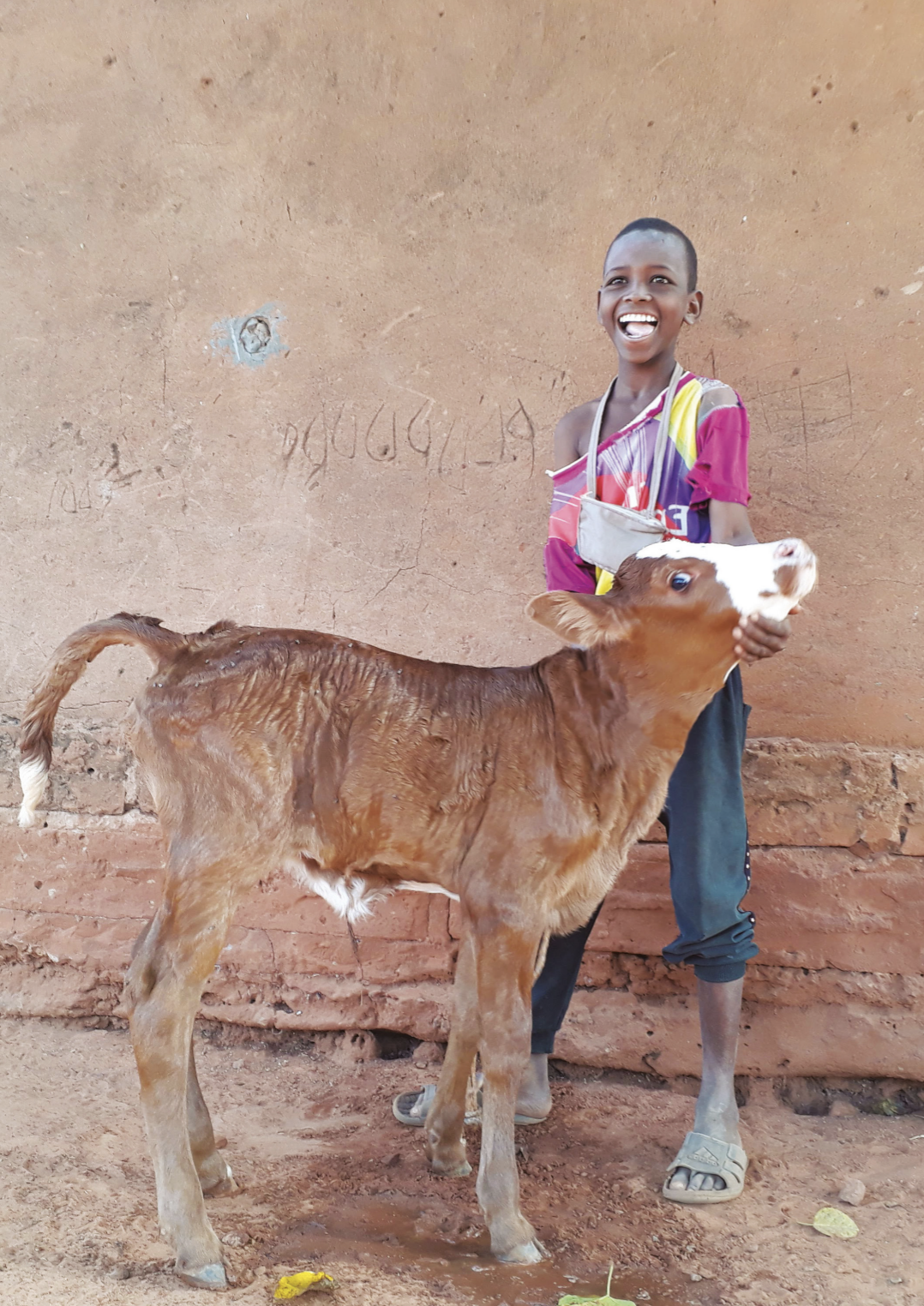
Overall, 23% of inseminations resulted in calves surviving at least one month. Underreporting of calves, especially male calves, was observed. This was likely because the farmers did not want to have their calves castrated, as was required by the project, preferring instead to have them available as future breeding bulls. The intended genetic strategy proved not to be viable because the local public sector partner was unable to provide reliably the technical services required, despite considerable investment in human and physical capacity building.
Also, plans to produce pure-bred exotic bulls and cows to support the ongoing breeding program failed due to the very low success rate from implanting pure-bred imported exotic embryos in local zebu cows (3 survivors from 31 embryos).
During the course of the project, a number of factors were identified that were deemed to be necessary for similar initiatives to succeed. These were:
- favorable local and national policies and the existence of the required public and private sector actors; selecting and targeting the right farmers who could provide the management and conditions to keep their cattle healthy and well nourished;
- having well trained and experienced AI technicians who have access to the necessary inputs and equipment; and secure upstream and downstream markets especially for feed and milk;
- A simple scoring system was developed by the project team to enable others to determine whether fixed-term AI would be appropriate in different contexts.
